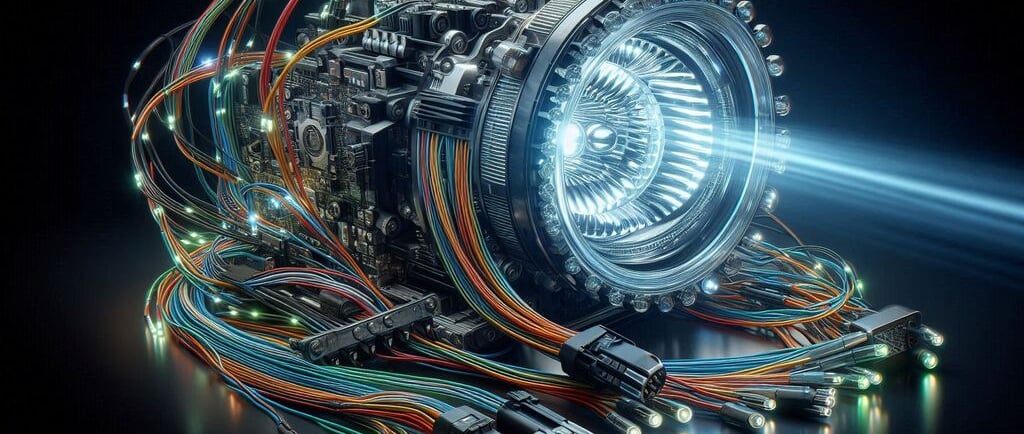Lighting Systems (Headlights, Tail Lights)
When you hit the road, the last thing you want is for your vehicle’s lighting system to fail.
ELECTRICAL SYSTEMS
11/14/20244 min read


Lighting Systems: Headlights and Tail Lights Explained
When you hit the road, the last thing you want is for your vehicle’s lighting system to fail. Lighting systems—including headlights and tail lights—are essential for safety, visibility, and effective communication with other drivers. Whether you're driving at night or in foggy conditions, working headlights and tail lights make a world of difference in preventing accidents and ensuring a safe driving experience.
In this article, we’ll explore the various types of lighting systems found in vehicles, how they function, and why regular maintenance is crucial.
What Are Lighting Systems in Vehicles?
Understanding Headlights and Tail Lights
Lighting systems in vehicles are designed to provide visibility and help you see the road clearly, as well as alert other drivers to your presence. The primary components of these systems include:
Headlights: These lights are located at the front of your vehicle and provide illumination for the driver to see the road ahead. They are essential for driving at night or in poor weather conditions.
Tail Lights: Positioned at the rear of the vehicle, tail lights help other drivers see your vehicle from behind, especially at night. Tail lights are crucial for signaling your actions, such as stopping, turning, or changing lanes.
Both headlights and tail lights are essential for ensuring safety on the road. Let’s dive deeper into their individual functions and types.
Headlights: Types and Functions
Types of Headlights
Headlights come in several varieties, each with distinct features that cater to different driving needs:
Halogen Headlights
These are the most common type of headlights. Halogen bulbs provide a bright white light and are relatively inexpensive, making them a popular choice for budget-conscious drivers.LED Headlights
LED (Light Emitting Diode) headlights offer superior brightness and energy efficiency compared to halogen lights. They also have a longer lifespan, making them a preferred choice for modern vehicles.Xenon or HID Headlights
High-Intensity Discharge (HID) lights produce a bluish-white glow, which is brighter than halogen but uses less power. While these lights are more expensive, they offer superior visibility, making them ideal for night driving.Laser Headlights
A newer technology, laser headlights use laser diodes to produce highly efficient, intense light. Although rare and expensive, they are rapidly gaining popularity in luxury vehicles for their precision and energy efficiency.
Functions of Headlights
Night Driving: The most obvious role of headlights is to provide sufficient light for drivers to see the road at night or in low-light conditions, such as during heavy rain or fog.
High and Low Beams: Most headlights come with a high beam and low beam setting. Low beams are used for general driving, while high beams are for situations where you need extra illumination (when driving alone on a dark road).
Signaling: In some vehicles, headlights are used for signaling, such as flashing them to alert other drivers.
Tail Lights: Types and Functions
Types of Tail Lights
Just like headlights, tail lights come in different types:
Incandescent Tail Lights
These traditional lights use a filament inside the bulb that heats up to emit light. Although they are less energy-efficient than newer models, incandescent lights are still commonly used in older vehicles.LED Tail Lights
LED tail lights are becoming increasingly popular due to their energy efficiency and longevity. They light up quickly and use less power, which is why they're a favorite in newer car models.Fiber Optic Tail Lights
These tail lights use a network of fiber optics to distribute light evenly across the surface. They offer a modern and sleek look, often seen in luxury and high-performance vehicles.Dynamic Tail Lights
Dynamic or "sequential" tail lights light up in a sweeping motion when the driver turns on the turn signal. These lights provide a distinctive and more visible signal to other drivers.
Functions of Tail Lights
Visibility for Other Drivers: Tail lights are crucial for allowing other drivers to see your vehicle, especially at night. Without them, a car can become nearly invisible in low-visibility situations, leading to accidents.
Brake Lights: One of the most critical functions of tail lights is to signal when the vehicle is braking. This alerts drivers behind you to slow down and prevents rear-end collisions.
Turn Signal: Tail lights also double as turn signals, flashing to indicate a change in direction. This simple signal helps prevent confusion and ensures smooth traffic flow.
Common Issues with Lighting Systems
Like all vehicle components, lighting systems can experience issues over time. Here are a few common problems drivers face with headlights and tail lights:
Burned-out Bulbs: This is the most common issue. A bulb that’s burned out will need to be replaced immediately to maintain proper functionality.
Dim Lighting: Over time, headlights and tail lights may lose their brightness due to age, dirt, or damage to the lenses. Regular cleaning and replacing old bulbs can restore brightness.
Wiring Issues: Faulty wiring can cause lights to malfunction. If you're experiencing flickering or non-functioning lights, it could be a sign of an electrical issue that needs professional attention.
Lens Damage: Cracked or foggy lenses can significantly reduce the effectiveness of headlights and tail lights. If the lens is damaged, it may need to be replaced.
Tips for Maintaining Your Lighting System
Proper maintenance of your lighting system ensures that your headlights and tail lights work when you need them most. Here are a few tips to keep your lighting system in top shape:
Regular Inspections: Check your headlights and tail lights regularly to ensure they’re functioning properly. Replace bulbs as soon as they burn out.
Clean the Lenses: Over time, headlights and tail light lenses can accumulate dirt and grime, reducing their brightness. Clean the lenses regularly with a soft cloth and lens-safe cleaner.
Use the Right Bulbs: Make sure to use the correct bulbs specified in your vehicle’s manual. Incorrect bulbs can affect performance and lead to electrical issues.



